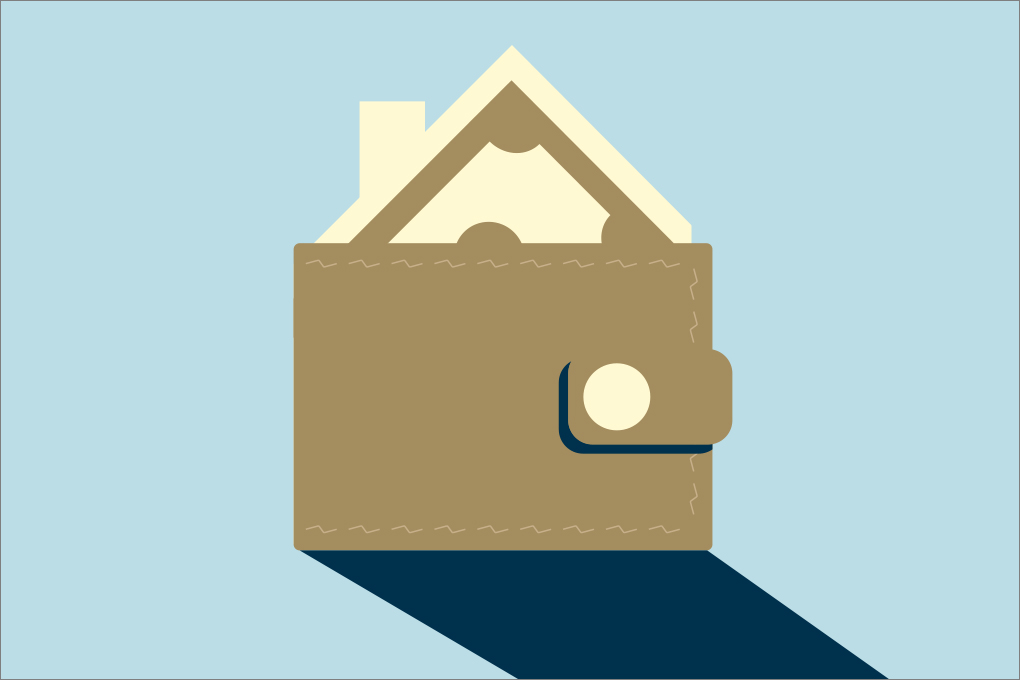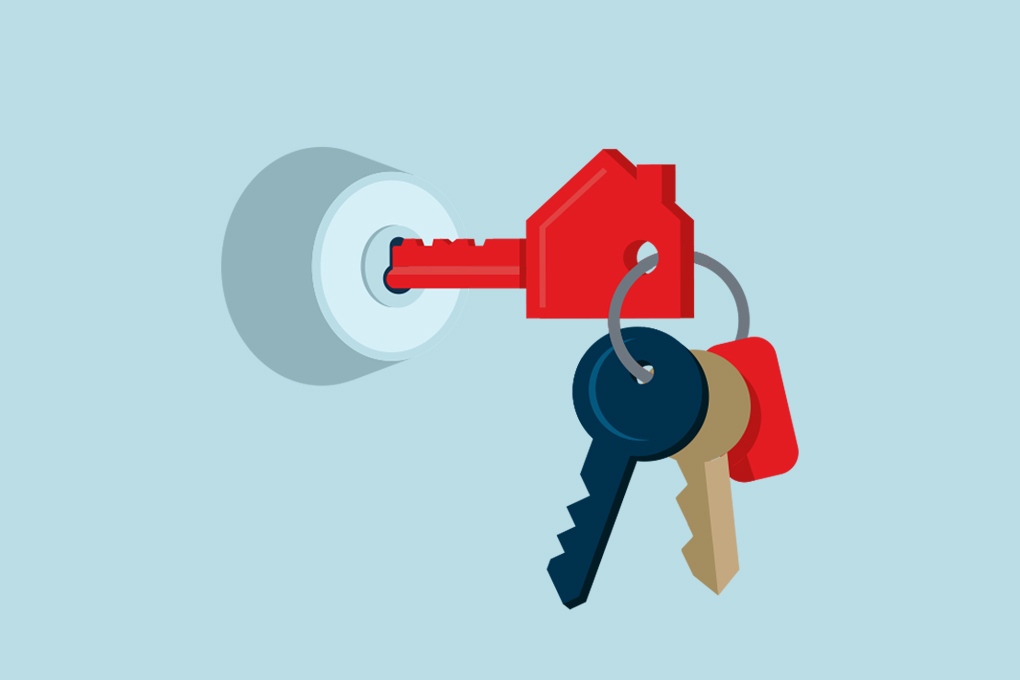Down payment: Rules to follow
Before looking for ways to secure your down payment, make sure you know the amount you’ll need. When you buy a house, condo or duplex that will become your residence, at the time of signing the mortgage loan, you’ll have to pay a minimum of 5% of the sales price for a home that is $500,000 or less. For example, if the house costs $300,000, the minimum down payment for it will be $15,000. Note that the rules are different when the sales price rises above $500,000.
However, if you have a down payment, but it amounts to less than 20% of the value of the property that you wish to buy, you must take out mortgage default insurance, which is usually provided by the Canada Mortgage and Housing Corporation (CMHC). This insurance mostly helps first-time buyers who often have difficulty securing the minimum down payment of 20% of the purchase price of the home.
Calculate the amount of your mortgage loan
Once you’re familiar with the rules regarding a down payment, you need to figure out how much you can afford when it comes to buying a property.
“You should always do that before you start house shopping,” says Louis-Philippe Ménard, Director of Personal Products and Financial Solutions at National Bank. The expert recommends meeting with an advisor to discuss your situation, your needs and the different possible scenarios when it comes to buying a home.
Though there are tools for calculating how much you can borrow, you still need to meet with an advisor who can provide a more accurate portrait of your situation. “The tools give you an idea, but they calculate only one dimension of a person’s borrowing capacity,” says Ménard. “When you meet with an advisor, they’ll take several things into account that will have an impact on each other and on the real situation of the borrower, like the start-up costs to keep in mind, the transfer tax (commonly known as the “Welcome Tax” in Quebec), landscaping fees, etc. An advisor can also supply you with a mortgage pre-approval, which real estate agents greatly appreciate. It not only guarantees you an interest rate, but it also proves your borrowing capacity, which is extremely useful when there are several buyers vying for the same property.”
Once you know what kind of property you can afford, you can start securing the amount that you’ll need to supply as your down payment when you sign your loan. See which of the following three solutions best suits your specific needs. Maybe you already have your down payment without realizing it!
1. Leverage your current RRSP
If you’ve been contributing to your Registered Retirement Savings Plan (RRSP), you can use it for a down payment by participating in the Home Buyers’ Plan (HBP).
With this program, you can withdraw up to $35,000 from your RRSP funds without being taxed if you’ve never been a homeowner or if you haven’t been one for more than five years. You can use this amount as a down payment or to cover home buying expenses like a notary or moving costs. Two people who buy a property together can get up to $70,000 for their down payment.
“You must then repay the amount taken from your RRSP to avoid having it become taxable income. You have 15 years to make payments to your registered plan without any fiscal impact,” explains Ménard. You also have to respect the timeframe for taking possession of the property. The transaction must be notarized no later than October 1 of the year following the withdrawal of the funds for the HBP.
Take the case of Sarah-Joëlle, who is 29 years old and plans to buy a property once she finds the love of her life. But a condo project suddenly catches her eye and she decides to buy her first place on her own. Her RRSP has sufficient funds to provide the down payment required, but she’s worried about having to reimburse it.
“If I go from being a renter to becoming a homeowner, my monthly payments will be several hundred dollars more per month,” she says. “I know that I’ll have to adjust my lifestyle to make it work, but I’m afraid of not being able to save enough every month to reimburse my RRSP.”
According to Ménard, that’s why planning with an advisor is key. “You have to keep in mind that the financial situation you find yourself in at the time of the purchase won’t reflect your future situation,” he says. “The first two years after buying a home are often more difficult, but, in theory, your financial situation should improve with time and you can start saving for your retirement again. You just have to find the right balance.”
The good news? Following your HBP, you don’t have to start reimbursing your RRSP until the second year after your withdrawal. That little bit of respite can make all the difference.
2. Save systematically
Among the many existing strategies to secure a down payment, saving is always an interesting option. To ensure that you do it frequently and effectively, think about setting up automatic withdrawals.
“We often advise people to invest systematically by making monthly withdrawals in the amount that equals the difference between the cost of their current rent and the payments that they’ll be making once they have a mortgage,” says Ménard.
So, if your rental unit costs $900 per month and you anticipate a mortgage payment of $1,600 per month, you need to make monthly investments of $700 in your savings account. At the end of the year, you’ll have saved $8,400 or nearly $17,000 if you have a partner who does the same thing.
“People have difficulty saving, but automatic withdrawals make that easier because they’re planned in advance and you don’t have to think about it,” says the expert. “And it’s good to get used to the shifting lifestyle and priorities that come with buying a home beforehand.”
3. Accept a family gift
To gather the funds you need for a down payment, you can also benefit from a family gift.
“It’s a fairly common phenomenon, especially in Toronto and Vancouver, where the price of homes has risen substantially in recent years. We’re seeing it more and more in Quebec as well,” says Ménard.
However, a word to the wise: For this option to work, it must be a real gift and not a loan.
A parent can also decide to sell their property to one of their children and offer the equity built up on the house over the years—gifting, in essence, a portion of the home. For instance, if a parent owns a home worth $500,000 and decides to sell it to their child for $300,000, that means $200,000 will be given in equity, bringing the mortgage down to $300,000.
“A parent can also decide to provide a sum of money for the purchase of a home while they’re alive rather than having their children wait for an inheritance,” says the expert.
Securing more capital
Would you like to take advantage of the HBP, but you have next to nothing in your RRSP? You can consider getting an HBP loan, which is an interesting fiscal strategy if you want to increase your current cash flow and become a homeowner down the road.
Make sure you’re going to buy a property—if not, you’ll have to cover the reimbursement of your loan—and plan the transaction a few months in advance, because it involves several steps.
- You first must borrow the sum of money and deposit it in your RRSP at least 90 days before you can withdraw it for the HBP.
- You can then use the amount that you withdrew from your RRSP for the HBP to reimburse the loan.
- On your tax return, you can use the refund from your RRSP investment to increase your cash flow. This amount will vary depending on your income, your tax rate, and any unused contributions or tax credits that you can apply for. Again, you must respect the timeframe for taking possession of a property.
“The HBP loan is a fiscal strategy used to maximize your cash flow. It’s important to analyze the various implications of this with an advisor before deciding to go this route,” says Ménard.
In conclusion, securing a down payment is possible and there are several ways to go about it. “The important thing,” says Ménard, “is to plan your strategy with an expert who can guide you through it all.”



